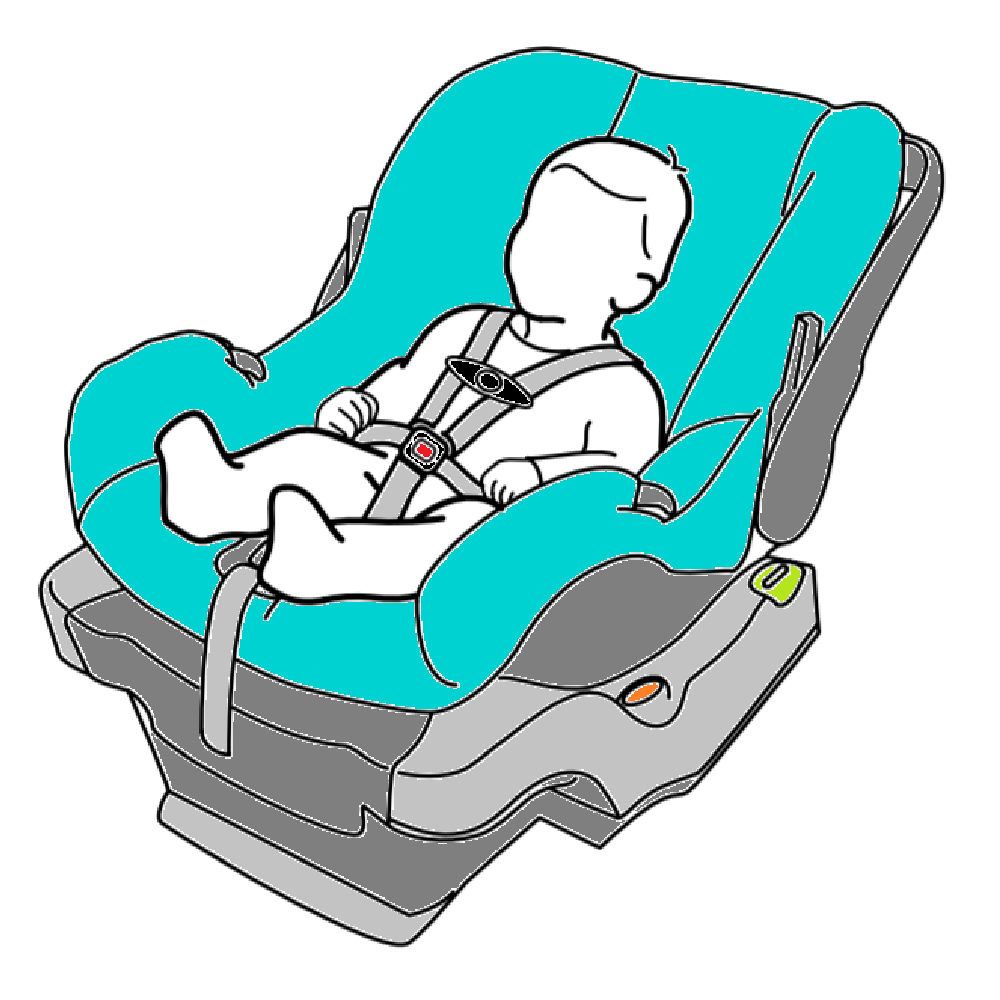Borrowing, Buying, and Reselling Used Car Seats
How to tell if a used car seat is safe?
Here is what you need to know before using a previously used car seat. Do not risk using a pre-owned car seat if you are unsure about the following information.
Know the ENTIRE history of the seat (from every previous owner).
- Was the seat involved in any crash? Read more about crashed seats below.
- How was the seat, buckles, straps, and webbing cleaned? All car seat cleaning instructions can be found in the car seat manual. As a rule of thumb, harness straps and webbing can be wiped down with a moist cloth (like a baby wipe), but never machine washed, submerged in water, or cleaned with any detergents or cleaning chemicals. This damages the integrity of the webbing fabric which may cause it to fail in a crash.
- Has the seat ever been checked on an airplane (with baggage or at the gate)? Car seats that are checked on an airplane have been known to be handled very roughly (being thrown) and often coming back with visible (or not visible) damage. Consider a seat that has been checked on the plane to have an unknown history.
- Have any parts been replaced? Are any components aftermarket products? Read more about this below.
Make sure the car seat was never in any crash.
Most car seats can never be used again if involved in ANY type of crash. Car seats are intended to withstand only one crash because they can be damaged by crash forces. The damage is usually not visible upon inspection, so a visual examination of a crashed seat cannot guarantee that there is no damage. Most manufacturers require a car seat to be disposed after ANY crash, though a few manufacturers allow a car seat to be used again if it was involved in a “minor crash” and meets ALL of the following NHTSA criteria. Read the car seat owner’s manual to see if the car seat can or cannot be used after a minor crash.
- The vehicle was able to be driven away from the crash site; AND
- The vehicle door nearest the child restraint was undamaged; AND
- There were no injuries to any of the vehicle occupants; AND
- The air bags (if present) did not deploy; AND
- There is no visible damage to the child seat.
Make sure there is no visible damage or missing parts.
Do not use a seat with any damage in the plastic, harness straps, LATCH webbing, or buckles. Some missing parts (like strap covers) can be reordered from manufacturers, but it’s important to know what parts are missing and why, and whether they are required for safe use. This information can be found in the owner’s manual. Avoid car seats with missing labels.
Some car seats may have aftermarket parts and products on them that did not come with the seat originally. Aftermarket products should not be used with a car seat because they might cause the seat to handle crash forces in an unintended and potentially dangerous way.
Check for Recalls and Expiration
Check car seat labels, stickers and plastic shell for the following information:
- Name of the Manufacturer.
- Name of the specific Model.
- Model Number.
- Date of Manufacture (and in some cases Date of Expiration). Sometimes this information is stamped into the plastic shell making them tricky to find. Tags that are sewn into the harness straps with a date on them, are not the date of manufacture for the car seat. An Expiration Date can either be printed on a sticker, stamped in the plastic, or mentioned in the manual – in some cases the manufacturer needs to be contacted for clarification.
To check for Recalls, look up the model name, number and date of manufacture at www.safercar.gov or www.seatcheck.org. Check what is the reason for the recall. Sometimes a recalled seat can be used safely just after replacing a specific part of it, as per manufacturer instructions. Call manufacturer for directions about safely using or discarding a recalled seat.
All car seats have an Expiration Date. The materials that make up car seats change over time. Plastics becomes brittle, belt webbing and harnesses becomes weak, and metal components rust. The constant fluctuations in temperature and moisture that the seat is exposed to over the years adds to these changes. An expired seat will not be able to perform properly in a crash. It is never safe for any child to ride in an expired car seat! Most seats expire 6 years from the date of manufacture, others just a few years longer. Before you buy the seat, consider how long the seat will be used for, and if it has enough time left before its expiration. Children use a rear-facing only (infant seat) during the first year. Convertible seats and combination seats should have about 3 years left before expiring. A booster should last the child between age 5-10 years old.
Contact Us for more Information

